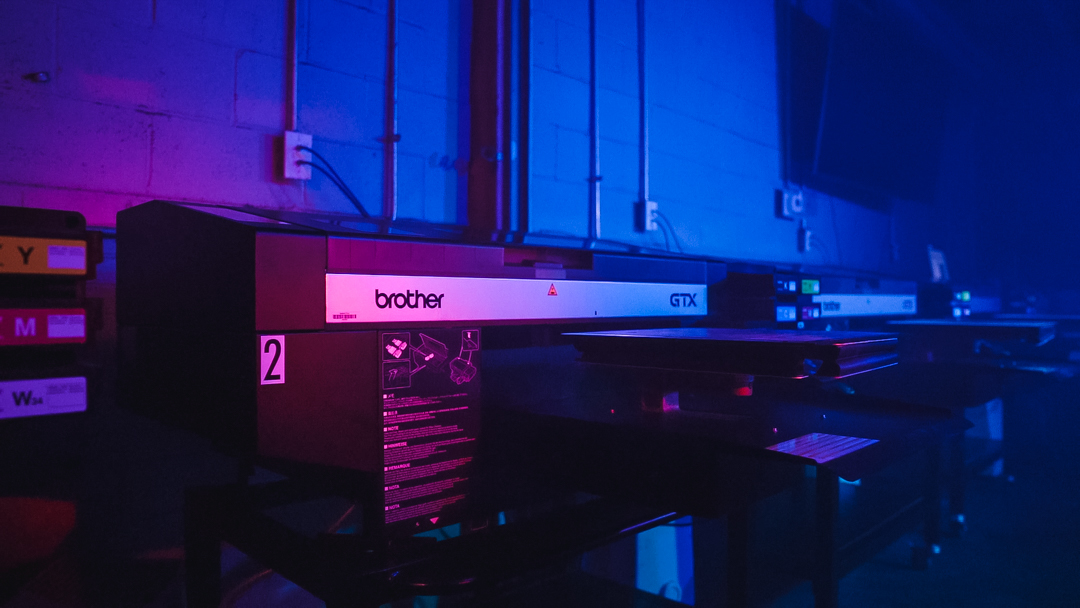So, what are the differences and when should you choose one over the other?
When should you go with DTG?
Working with a high quality photograph or detailed graphic? Then DTG is the way to go. This method uses an inkjet printer to capture every little detail and color, resulting in a high definition print. Colors are unlimited. However, the fabric choice is not. That’s because the ink is water-based and requires material that can absorb it. That’s why we stick with 100% cotton for all DTG orders.
When should you go with screen printing?
If your design is simple (e.g., a bold, typographic design) we recommend screen printing. This method involves using mesh stencils to push a thick, oil-based ink directly onto fabric. Each color requires its own stencil, so color choices are limited to up to eight standard inks, or you can choose from a list of Pantone colors that we’ll match. The result is a vibrant, durable design that’s more saturated and can be printed on virtually any fabric.
What else should I know?
Key takeaways
DTG printing:
- Uses water-based ink to dye the fabric
- Works best for detailed, colorful designs
- Requires 100% cotton for best results
- Is cost-effective for small orders
Screen printing:
- Uses oil-based ink that sits on the fabric
- Works best for simple designs with just a few colors
- Can be done on virtually any fabric
- Is cost-effective for large orders






